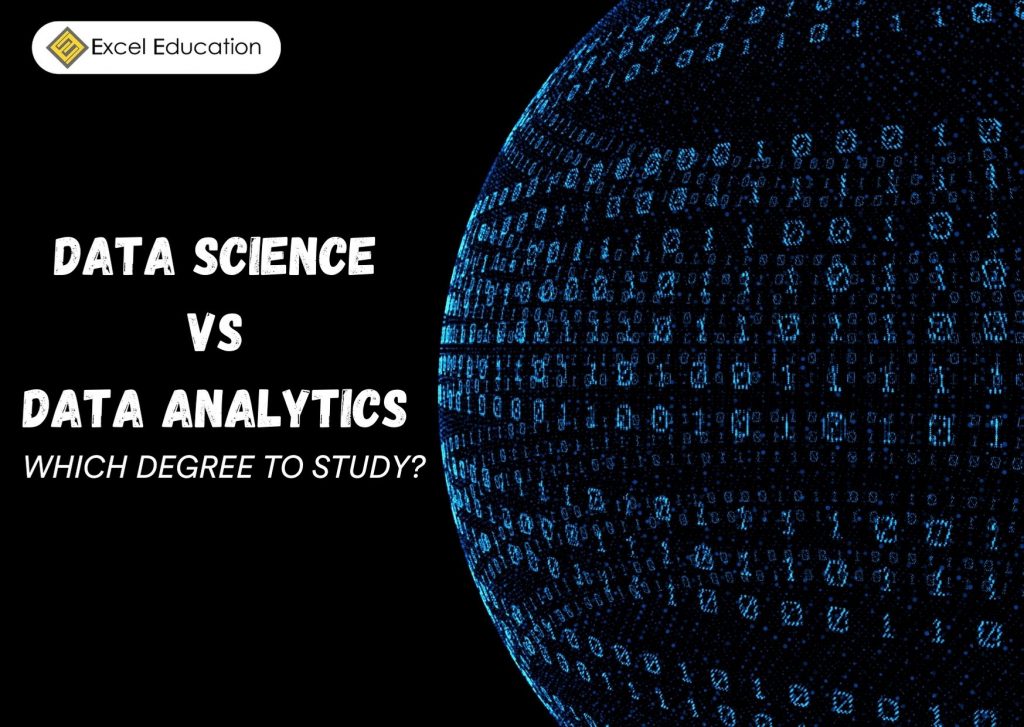
Data is a collection of information normally gathered through numbers or observations to be used for the analysis of trends, user behaviours or disease outbreaks. In a corporation or business, data is often gathered for marketing purposes, financial analysis or to make a better decision for the company. In today’s world, as long as you own a smartphone with different mobile applications, chances are your user experiences and activities are being tracked and stored as data. As the world moves towards digitalization, this data is growing exponentially with time and at a high increase rate, which results in what we referred to as ‘big data’ today.
Thanks to big data, companies are able to connect with users by offering services or products based on their activity on the Internet such as personalized music, movies and shopping items. However, such massive data requires professionals to parse through them to get the right information. Thus, birthed data science and data analytics as a career that one could pursue as a professional.
In this article, we will highlight the differences between data science and data analytics so that students would have a clear idea of pursuing their career based on their interest in the data world.
What is Data Science?
Data science is an integrative approach to extract key information and insights from large structured or unstructured data. Data science involves data mining, statistics, machine learning and programming to interpret data and present the outcomes or predictions for the decision-making process. The common tasks carried out by data scientists are as the following:
- Collecting large sets of data from various sources.
- Use a wide range of tools and techniques such as SQL, data mining and data integration methods to evaluate and prepare data.
- Cleaning and validating the data for accuracy, completeness, and structure.
- Devising and applying models and algorithms to extract insights from big data.
- Analyzing the data to identify patterns and trends.
- Interpreting the data to discover solutions and opportunities.
- Presenting to stakeholders the possibilities of solving business problems with the results for decision making.
In today’s world, data science helps businesses and organizations to provide value to their consumers. Data enables businesses to provide various resources to solve major problems. Companies such as Netflix and YouTube extracts information from big data to deliver the right product to users. Algorithms help the company to create personalized recommendations for users based on their watched or browsed history.
Data science also enables the game industry to keep gamers engaged with stunning graphics and motion. Data insights and creativity help developers to create an interactive and complex storyline for the games by gaining information of what the player wants and design new game concepts, scenario and mechanics. Game companies also apply machine learning algorithms to upgrade their user’s character as they move up to higher level.
What is Data Analytics?
Data analytics is the process of analyzing existing datasets to draw conclusions for current problems for businesses. The main objective of data analytics is to maximize the efficiency and productivity of a business. Thus, a data analyst is responsible to analyze large sets of data to identify trends develop charts and presentations to help businesses make more strategic decisions.
The common roles of data analyst include:
- Designing and maintaining data systems and databases, including removing corrupted data.
- Mining data from primary and secondary sources, then reorganizing said data in a readable format.
- Use statistical tools to interpret data sets, paying particular attention to trends and patterns that could be valuable for decision making.
- Preparing reports for executive leadership that effectively communicate trends, patterns, and predictions using relevant data.
- Liaise with programmers and organizational leaders to identify opportunities for process improvements and system modifications
There are several types of data analytics with distinct attribute include of a business or organization.
Descriptive Analytics
Analyses records such as monthly revenue, quarterly sales and website traffic to study and spot trend changes.
Diagnostic Analytics
Compares descriptive data sets to identify dependencies and patterns. This helps an organization determine the cause of a positive or negative outcome.
Predictive Analytics
Determines expected outcomes by detecting tendencies in descriptive and diagnostic analytics. This enables an organization to take strategic action such as approaching customers who are unlikely to renew a contract.
Prescriptive Analytics
Prescriptive analytics uses complex algorithms and advanced technology such as machine learning to address potential problems or keep updated on industry trends.
What are the Differences Between Data Science & Data Analytics?
Data science and data analytics may overlap in terms of job roles, the significant differences between them is the job scope. Data science is more of a broader study in mining large datasets, meanwhile, data analytics focus more on a specific version to extract actionable insights that can be executed immediately based on existing data. The following table shows the key differences between data science and data analytics.
Careers | Data Science | Data Analytics |
Scope of Data | Broader study in extracting information from large datasets | Specific and more concentrated on a particular dataset |
Data Structure | Unstructured | Structured |
Objective | Find the right questions to solve potential problems | Find actionable data to solve existing problems |
Fields of Study |
|
|
Core Skills & Tools |
|
|
Academic Requirements to Study Data Science & Data Analytics in Australia
STPM | CGPA of 3.30 or minimum grade B in 3 best subjects |
A-Levels | A minimum grade of BCC |
UEC | The average score of A2 |
ATAR | A minimum score of 76 points |
International Baccalaureate (IB) | A minimum score of 25 points |
*The requirements may vary among universities, for inquiries on other entry requirements, contact Excel Education.
English Requirements to Study Data Science & Data Analytics in Australia
IELTS | Overall score of 6.5 with 6 points in each sub-bands. |
TOEFL | Overall score of 79: Listening:16, Reading:16, Speaking:18 and Writing: 21 |
PTE | Overall score of 58 with 50 points in each sub-band |
*The requirements may vary among universities, for inquiries on other entry requirements, contact Excel Education.
Top Universities to Study Data Science & Data Analytics Degree in Australia
#1 The University of Melbourne

The major is designed to give students an intellectual understanding of integrating and applying statistical and computing principles to solve large-scale, real-world data science problems. It is suitable for students interested in a career in government or industry or who wish to pursue specialised graduate study.
Program | Bachelor of Science (Data Science) |
Intake (2021) | March & July |
Duration | 3 years (Full time) |
Indicative Annual Fees (2021) | AUD $41,912 – $ 45,944 |
#2 University of Adelaide

This degree will equip students with opportunities for improvement and growth, where they could work in government, consultancies or large corporations, at home or abroad. Students are also able to apply their knowledge to drive decision-making in a venture of their own.
Program | Bachelor of Applied Data Analytics |
Intake (2021) | February & July |
Duration | 3 years (Full time) |
Indicative Annual Fees (2021) | AUD $41,500 |
#3 University of Technology Sydney (UTS)

This program equips students to practice as data science and analytics professionals, developing information technology skills, expertise in statistics and mathematics, and familiarity with key business and policy development areas.
Program | Bachelor of Science in Analytics |
Intake (2021) | February & July |
Duration | 3 years (Full time) |
Indicative Annual Fees (2021) | AUD $38,736 |
#4 RMIT University

Students will build a practical understanding of recent developments in computer science, information technology and statistics, as well as apply mathematical and statistical knowledge to new and ongoing problems.
Program | Bachelor of Data Science |
Intake (2021) | February & July |
Duration | 3 years (Full time) |
Indicative Annual Fees (2021) | AUD $34,560 |
#5 Queensland University of Technology (QUT)

This degree entails the theory and practices for data acquisition, storage, management, processing, analysis and visualisation. This program is well crafted by QUT to focus more on enhancing students’ mathematical skills and coding languages.
Program | Bachelor of Data Science |
Intake (2021) | February & July |
Duration | 3 years (Full time) |
Indicative Annual Fees (2021) | AUD $34,200 |
#6 University of South Australia (UNISA)

Combining both data analytics and information technology, Students will learn to analyse and visualise big data sources and data trends as well as to generate data management strategies such as cost reductions, effective decision-making processes and the development of new products and services.
Program | Bachelor of Information Technology and Data Analytics |
Intake (2021) | January, April, June & September |
Duration | 3 years (Full time) |
Indicative Annual Fees (2021) | AUD $23,000 |
About the Author

Sasvin Ravi
I am a freelance content writer, writing on a weekly basis while discovering my true passion..


